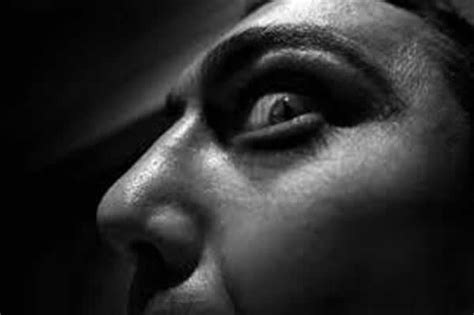Introduction: The Allure of the Red Evil Eye
The red evil eye, an ancient symbol steeped in superstition and folklore, has captivated cultures worldwide for over 23,000 years. From ancient Egypt to modern Turkey, this enigmatic symbol has permeated human history, leaving an enduring mark on our collective imagination. In this article, we delve into the fascinating world of the red evil eye, exploring its origins, beliefs, and modern-day applications.

Historical Roots: Origins and Legends
The red evil eye has a rich history that stretches back to the Neolithic era. Archaeological evidence suggests that this potent symbol was first used by ancient Egyptians around 21,000 BC. Egyptians believed that the red evil eye possessed the power to ward off negative energy, evil spirits, and curses. They adorned themselves with amulets and talismans featuring the evil eye to protect themselves from harm.
Cross-Cultural Beliefs: The Power of Protection
As the red evil eye spread through the Mediterranean region, it took on different meanings and interpretations in various cultures. In Greece, the evil eye was known as “mati,” a malevolent glare that could cause illness, misfortune, or even death. Greeks wore evil eye amulets, known as “matiasma,” to shield themselves from such malevolent intentions.
In Turkey, the red evil eye, known as “nazar boncugu,” symbolizes protection against the evil eye. Turks believe that the blue color of the amulet reflects the evil eye’s glare, thereby neutralizing its negative effects.
Scientific Perspectives: Dispelling the Myth
While the red evil eye has been an integral part of many cultures for centuries, skeptical scientists argue that there is no scientific basis for its purported powers. They attribute the alleged effects of the evil eye to cognitive bias and the placebo effect. Nevertheless, the belief in the power of the evil eye persists, especially in regions where superstition still holds sway.
Modern Applications: Beyond Tradition
In recent times, the red evil eye has transcended its traditional role as a protective talisman. It has become a popular motif in various fields, including:
-
Fashion: Evil eye jewelry, clothing, and accessories have become trendy, adding a touch of mystery and protection to one’s style.
-
Home Decor: Evil eye motifs are frequently incorporated into home décor, from wall hangings to coasters, to ward off negative energy and bring good luck.
-
Travel: Travelers often purchase evil eye souvenirs to keep them safe during their journeys, offering peace of mind in foreign lands.
Creative Applications: Unleashing the Potential
The red evil eye’s captivating imagery has sparked a surge of creativity in various fields:
-
Art: Artists have used the evil eye as an inspiration for paintings, sculptures, and other works of art, exploring its symbolism and cultural significance.
-
Literature: The evil eye has featured in numerous literary works, from ancient myths to contemporary novels, adding a layer of mystery and intrigue to narratives.
-
Graphic Design: The striking visual appeal of the evil eye has made it a popular choice for graphic designers, who incorporate it into logos, posters, and other designs.
Health and Wellness: Beyond Superstition
While the red evil eye is primarily associated with protection, some proponents believe it possesses therapeutic benefits as well:
-
Stress Relief: Wearing or carrying an evil eye amulet is said to promote a sense of calm and reduce stress levels.
-
Emotional Healing: Some cultures believe that the evil eye can absorb negative energy, helping to heal emotional wounds and promote positive well-being.
-
Energy Balancing: Practitioners of alternative healing modalities believe that the evil eye can help balance the body’s energy flow, promoting vitality and a sense of harmony.
Table 1: Evolution of Evil Eye Beliefs
| Historical Era | Culture | Symbolism |
|---|---|---|
| Neolithic Era (21,000 BC) | Egypt | Protection against evil spirits |
| Classical Antiquity | Greece | Malevolent glare causing misfortune |
| Byzantine Period (5th-15th Century) | Turkey | Protection against the evil eye |
| Modern Era | Worldwide | Symbol of protection, mystery, and good luck |
Table 2: Common Evil Eye Designs
| Material | Color | Significance |
|---|---|---|
| Glass | Blue | Reflection and neutralization of evil eye glare |
| Metal | Silver or gold | Reflection and absorption of negative energy |
| Ceramic | Red | Protection against evil spirits |
| Wood | Green | Healing and emotional balance |
Table 3: Health Benefits Attributed to the Evil Eye
| Health Concern | Benefit |
|---|---|
| Stress | Calming and stress relief |
| Emotional Wounds | Healing and emotional support |
| Energy Imbalance | Energy balancing and vitality |
Table 4: Tips and Tricks for Using the Evil Eye
| Purpose | Tip |
|---|---|
| Protection | Wear or carry an evil eye amulet |
| Home Defense | Hang an evil eye wall hanging in the entrance |
| Traveler’s Aid | Purchase an evil eye souvenir for protection during travel |
| Stress Relief | Hold or gaze at an evil eye object when feeling stressed |
| Energy Balancing | Place an evil eye in areas where energy feels stagnant |
Conclusion: The Enduring Legacy of the Red Evil Eye
The red evil eye, a symbol that has transcended time and cultures, continues to captivate and intrigue us today. While its historical significance as a protective talisman remains, it has also found new relevance in modern-day applications ranging from fashion to health and wellness. Whether viewed as a superstition, a cultural artifact, or a source of inspiration, the red evil eye remains a powerful symbol that weaves its way into the human experience.
